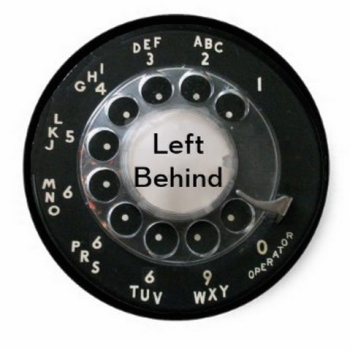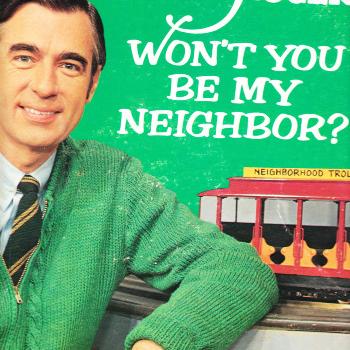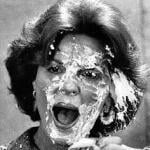From September 26, 2013, “Today’s TV show, tomorrow’s ‘everybody knows’”
The Headless Horseman, according to the new Fox television show Sleepy Hollow, is none other than the first of the “four horsemen of the apocalypse” from the book of Revelation.
That premise calls for an indefensible exegesis both of John’s Apocalypse and of the short story by Washington Irving — two of the many texts enlisted and reinvented to serve the show’s convoluted premise. The Wikipedia entry linked to above refers to the show as “a modern-day retelling” of Irving’s story. Nonsense. This is not that story and very little of that story can be found in Sleepy Hollow, apart from the words “Sleepy Hollow” and “Headless Horseman” and “Ichabod Crane.” Irving’s story is just one of the many bits of raw material reprocessed to create the new fantasy/horror/mystery/romance story the show wants to tell.
It’s unfair to the storytellers producing this new story to criticize them for infidelity to Irving’s tale. They’re just trying to make an entertaining TV show. So we should first set aside concerns about whether their story is compatible with Irving’s — or with John of Patmos, or with American history — and just ask if the show is any fun.
Judging by the pilot episode, I’d say, well, sort of. The two leads seem to be likable characters, and they’re played by two very likable actors — Tom Mison and Nicole Beharie. Creators Alex Kurtzman and Roberto Orci — who helped bring us Fringe — still have a knack for creepy atmospherics and occasional touches of humor (my favorite fan-service gag was their casting The Kurgan as the sheriff). But it’s also a bit of a mess, like a big stew with way too many disparate ingredients. It’s like The X-Files meets National Treasure, with big chunks of Highlander, Supernatural, Warehouse 13, The Da Vinci Code, Buffy, Beauty and the Beast, New Amsterdam, Charmed and Millennium tossed in. I like most of those things, but I’m not sure they can all fit together.
I’ll cut the show some slack for having to cram so much implausible exposition into its pilot and agree with David Sims of the AV Club that it’s got some goofy appeal, despite being “catastrophically silly.” …
But I’m not trying to write a TV review here. What I’m interested in here is not the way that a TV show like Sleepy Hollow reprocesses the raw material of literature, scripture and history, but rather the way that our understanding of literature, scripture and history can be reshaped even by a weird little TV show like Sleepy Hollow.
Let’s take history first. History teachers watching Sleepy Hollow will be in the same uncomfortable position they found themselves in watching National Treasure or Warehouse 13. These stories incorporate bits of real history and mix them with a heavy dose of fantasy, and it’s not easy for history teachers to sign up for that ride without some misgivings.
George Washington is a character in Sleepy Hollow. Or, rather, “George Washington” is a character in Sleepy Hollow. This “George Washington” bears many similarities to the historical figure of the colonial general and first American president. “George Washington” looks just like George Washington. But “George Washington,” unlike George Washington, is also part of the convoluted mythology of Kurtzman and Orci’s show — apparently a leader in an ancient secret society, aligned with a coven of good witches (or “witches”), and dedicated to preventing the forces of evil from bringing about the end of the world.
I imagine some history teachers tuned in to watch the first episode, hopeful that it’s time-traveling hero’s Rip Van Winkle experiences in modern-day New York might do some pedagogical good. But then they got that familiar sinking feeling — probably in the scene with the ominous close-up on the pyramid on the back of the dollar bill — as they began to realize that their students would be absorbing all sorts of new “knowledge” about “George Washington” that it will be frustratingly difficult, later, to separate from what those teachers are trying to teach about George Washington.
What’s interesting to me is that this won’t just be a problem with the relatively few students who watch this show. It may be, as Sims writes, that Sleepy Hollow is “so delectably silly … it’s practically guaranteed a swift death by cancellation,” but if the show finds its footing and endures for a full season or two, or lives on in syndication, then its mythology will begin to influence the culture far beyond its core audience. Future storytellers enlisting George Washington will also incorporate bits of this “George Washington,” and it won’t just be young students who will have a hard time distinguishing between the two.
The show’s literary influence could wind up being just as pernicious. One of the lead characters is named “Ichabod Crane,” but he is a revolutionary soldier and spy, not a superstitious schoolteacher. This “Ichabod” is woefully misnamed — his glory is quite intact (the name Ichabod means “the glory has departed”). The climax of Irving’s story involved Ichabod Crane fleeing the Headless Horseman, but on the show, “Ichabod Crane” runs toward the Horseman as the only soldier brave and strong enough to face him in battle. Irving’s Ichabod Crane never looked like he was about to say, “I am Duncan MacLeod of the Clan MacLeod, and I believe your fight’s with me.”
My guess is that more than a few students are in for some embarrassing grades after trying to bluff their way through a quiz on “The Legend of Sleepy Hollow” based on what they’ve “learned” from this show. I’d also guess that some future fans of the show may later come to dislike or even resent Irving’s story for besmirching the honor of their hero. After getting to know “Ichabod Crane,” meeting Ichabod Crane is bound to be a disappointment.
Which brings us to the show’s conscription of the symbols and language of the book of Revelation. Here again we have the same problem of familiar words and symbols enlisted for different purposes and invested with different meanings.
But the problem here is more complicated than the problem frustrating history and English teachers. Those teachers may be troubled by the show’s blurring of “George Washington” and “Ichabod Crane” with George Washington and Ichabod Crane, but they’re fully aware of the distinctions and they’re working to maintain them. The relationship between popular theology and popular culture, alas, never involves such clear distinctions. Pop-culture mythologies that work their way into what everybody “knows” about various religious symbols or biblical passages inevitably wind up influencing the way some people preach and teach about those symbols and passages. Those new meanings invented by storytellers thus become, for others, something they heard in church or in Sunday school, and for them the fanon becomes the canon.
The pilot of Sleepy Hollow presented us with a host of ideas and assumptions about the devil and the book of Revelation. Most of that comes from earlier such stories — earlier fantasy/mystery/thriller/romance stories that drew on those symbols, reinventing or elaborating as required by the story being told. Kurtzman and Orci aren’t really starting with the biblical book of Revelation, then reinventing it for their purposes. They’re starting with the pop-cultural mythology of the book of Revelation and then further reinventing it for their purposes. And their reinvention will, in turn, influence future revisions and reinterpretations.
That same endless cycle is also at work in other aspects of this show. The starting point for Sleepy Hollow’s “George Washington” isn’t only the historical George Washington, but also all the previous “George Washingtons” from all the previous popular stories invoking his name and image. Or consider the “witches” of Sleepy Hollow and the near-impossibility of trying to sort the popular mythology of such “witches” from any actual women who may or may not have been anything at all like what the show means by that term.*
When it comes to “Revelation,” there’s a century-old industry feeding off this endless cycle of storytelling appropriation and reinvention. The “Bible prophecy” business involves thousands of speakers and writers, many of whom are guilelessly ingesting all manner of popular reimaginations while themselves imagining that all those stories are somehow a part of the actual text. Others seem to do this intentionally — the “Bible prophecy” biz is highly competitive, so you need an edge. If people like The Omen, then they’ll enjoy it if you work that into your shtick and start pretending that Revelation has something to say about Damien Thorn.
It’s too soon to say much about how Sleepy Hollow will feed the endless cycle of what “everybody knows” about the book of Revelation, but already we can see one way in which it reinforces the pop-mythology of what everybody knows and one way in which it seems to challenge it.
For the storytellers of Sleepy Hollow, Revelation is a book of prognostication — a collection of predictive prophecies foretelling the future and describing the end of the world. That’s such a widely accepted notion and such an essential part of the mythos of everybody knows that it’s very, very difficult to read John’s Apocalypse today without reading it through that interpretive lens. That’s so much the case that even the word “apocalypse” has come to mean that, and only that.
But that’s not really what John of Patmos and the many other apocalyptic writers were trying to say. An apocalypse isn’t about the future of the world, but about the meaning of the world. In order to say what a story means, of course, you have to know how the story ends, and so it’s common in apocalyptic literature for writers to portray an ending to their story that accords with their meaning of it. But such portrayals are not predictions, they are assertions. “The arc of the moral universe is long, but it bends toward justice” is an apocalyptic statement. It’s not a prediction of the end of the universe, but an assertion about what the universe ultimately means.
By reinforcing the everybody-knows idea of Revelation as a predictive bit of coded fortune-telling, Sleepy Hollow steers us further away from being able to understand John’s Apocalypse.
Yet there’s another sense in which the show’s mythology seems to steer us back toward a more constructive reading of Revelation. The role of the heroes in Sleepy Hollow, apparently, is to save the world — and thus to prevent the “apocalypse” foretold by the “biblical” soothsayer. They see all the destruction and chaos and the “end of the world” supposedly “predicted” by “Revelation” and they ask the hero’s question — the same question asked by Buffy and Giles and Crowley and Aziraphale — “How do we stop it?”
That’s the opposite question from the one asked by the “Bible prophecy” industry. It reasserts something else everybody knows but that the “Bible prophecy scholars” seem to have forgotten: heroes and Good Guys try to save the world, not to facilitate its destruction.
Here I find it interesting that Sleepy Hollow’s Good Guys — “Ichabod Crane” and “George Washington” — are revolutionaries. That steers us closer to what John of Patmos was on about. It’s not about the End of the World, it’s about the end of the empire — revolution, liberation and a new beginning.
– – – – – – – – – – – –
* I’ve been distinguishing between the show’s “Ichabod Crane” and Irving’s Ichabod Crane by using quotation marks, but that over-simplifies things by implying only one layer to this ever-repeating cycle. We can’t really say that Sleepy Hollow gives us a “book of Revelation” based on the book of Revelation. It’s reinventing and reappropriating symbols that have already been endlessly reinvented and reappropriated. Conveying that with quotation marks would get unwieldy — a “””””Revelation””””” based on “”””Revelation”””” based on “””Revelation””” … This is also an over-simplification because it implies a too-direct genealogy of this-begets-that, while the truth is that Sleepy Hollow’s “Revelation” draws on a popular mythology that has a myriad of sources, each of which, in turn, was also shaped by a host of different sources.












